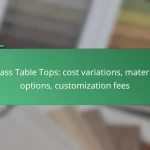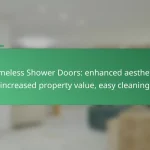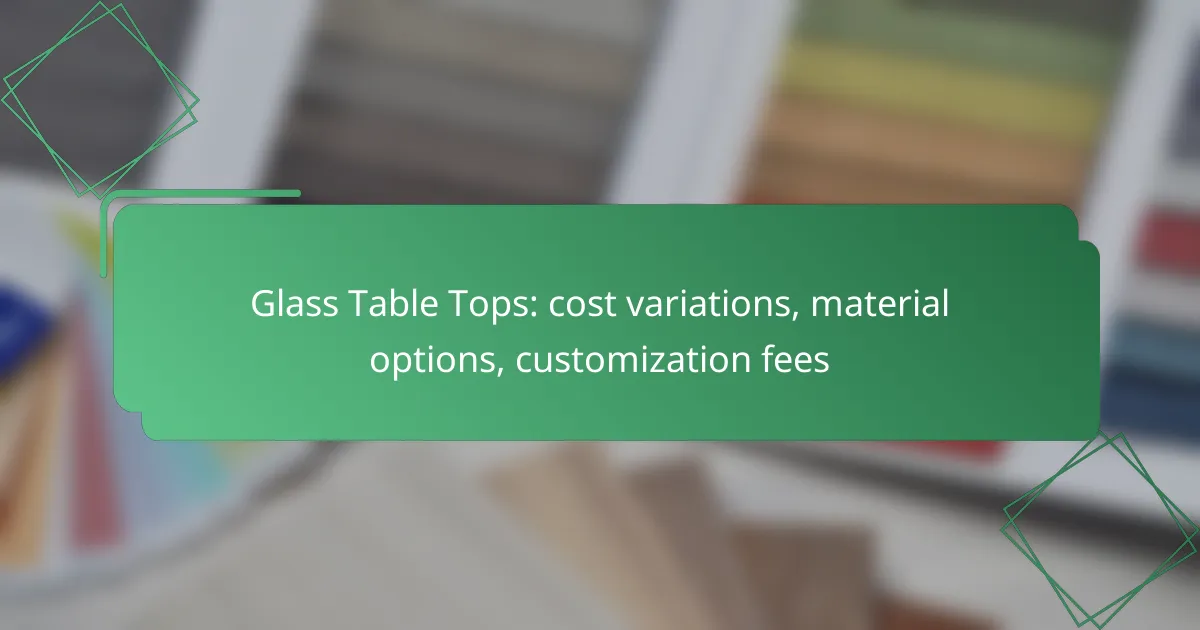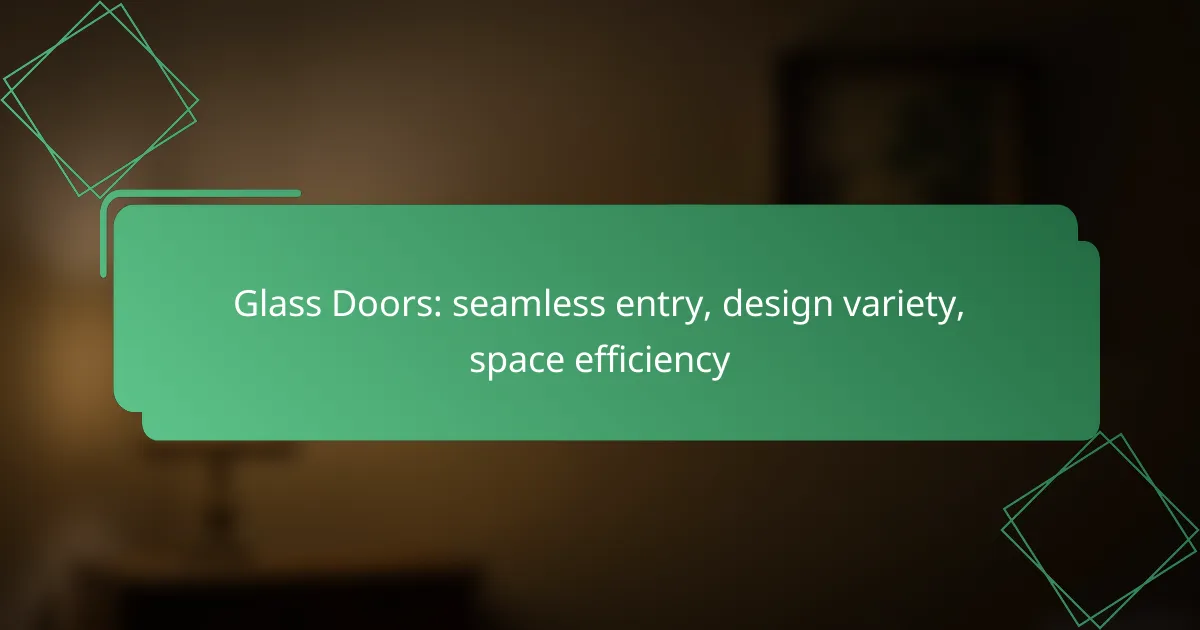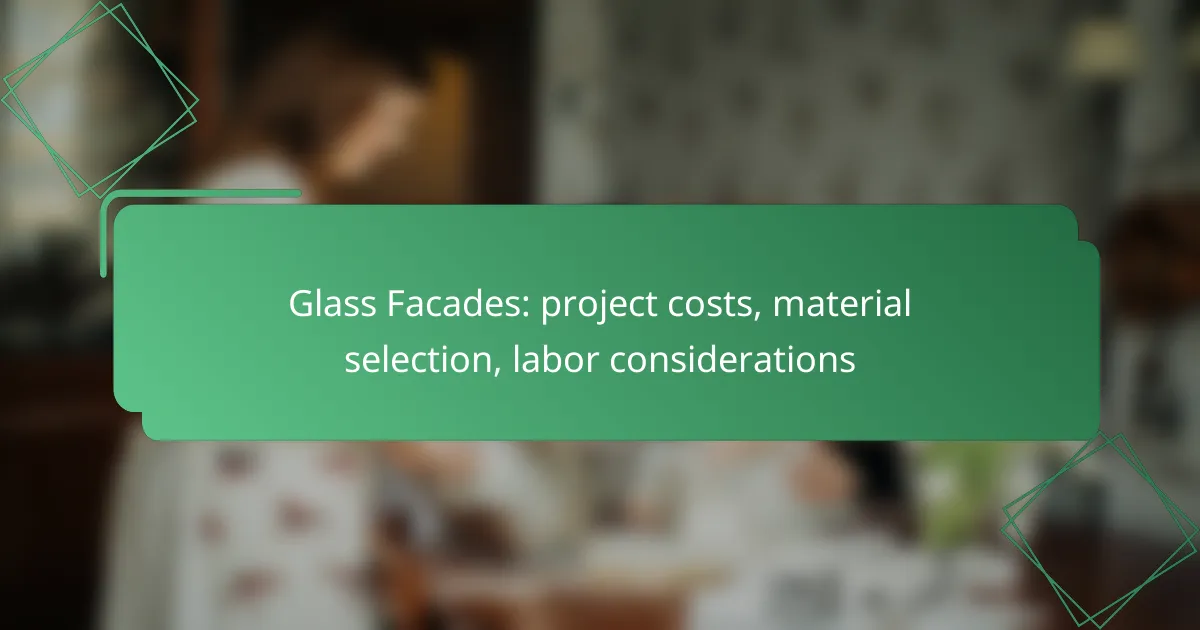Glass canopies offer a stylish and functional addition to any building, but understanding the associated costs is essential for effective project planning. Material costs in Canada can range from CAD 100 to CAD 300 per square foot, influenced by the type of glass and design complexity. Additionally, installation requires careful logistics to ensure safety and compliance, while ongoing maintenance expenses will involve regular cleaning and inspections to preserve the canopy’s integrity.
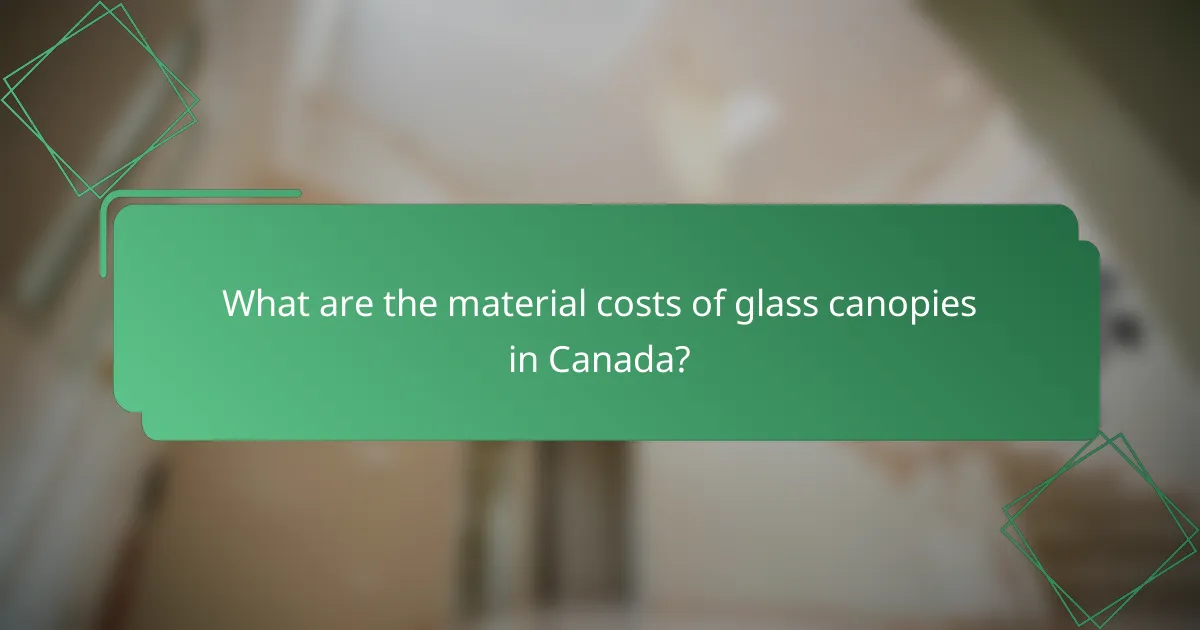
What are the material costs of glass canopies in Canada?
The material costs of glass canopies in Canada typically range from CAD 100 to CAD 300 per square foot, depending on various factors such as the type of glass and design complexity. Understanding these costs is crucial for budgeting and planning a project involving glass canopies.
Average cost per square foot
The average cost for glass canopies in Canada generally falls between CAD 150 and CAD 250 per square foot. This price can vary based on the thickness and quality of the glass used, as well as the overall design and installation requirements. Custom designs or larger installations may push costs higher.
Factors influencing material prices
Comparison of glass types
Local suppliers in Canada
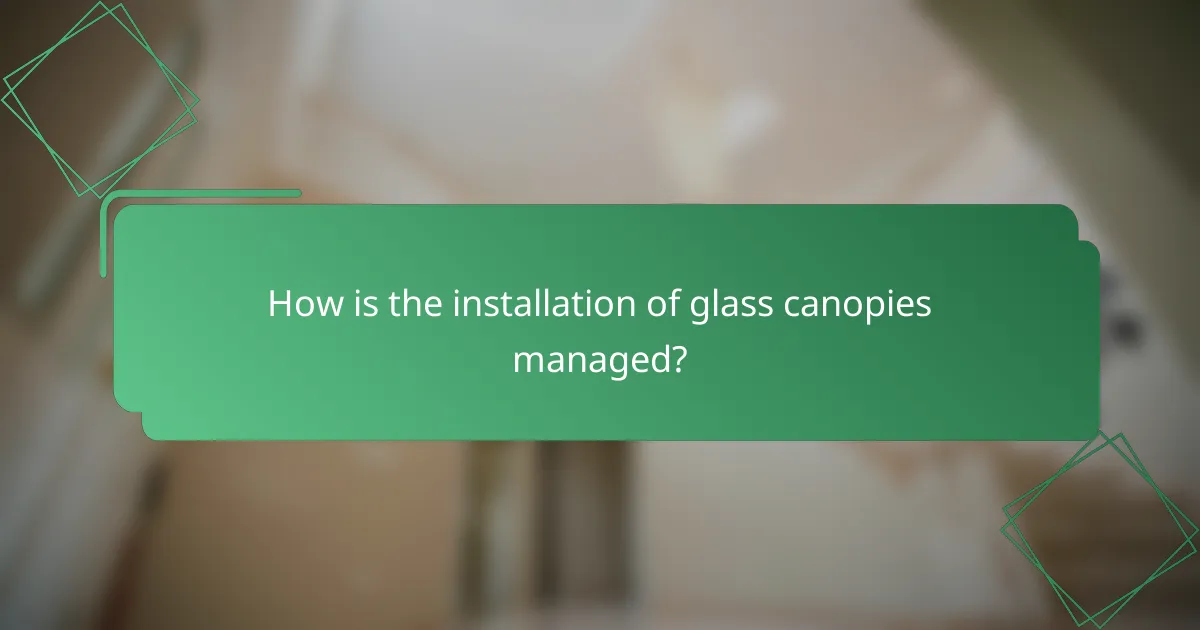
How is the installation of glass canopies managed?
The installation of glass canopies involves careful planning and coordination to ensure safety and compliance with local regulations. Key factors include selecting appropriate materials, scheduling installation, and obtaining necessary permits.
Typical installation timeline
The installation of glass canopies generally takes a few days to a couple of weeks, depending on the project’s complexity. Initial planning and design can take several days, while the actual installation may require one to three days, including time for curing adhesives and securing the structure.
Delays can occur due to weather conditions or permit approvals, so it’s wise to factor in additional time for unexpected issues. Always communicate with your installation team to stay updated on the timeline.
Required permits in Canadian cities
In Canada, installing a glass canopy typically requires building permits, which vary by city. Major urban centers like Toronto or Vancouver may have specific regulations regarding structural integrity and safety standards that must be adhered to.
Before starting the installation, check with your local municipality to understand the specific permit requirements and fees. Failing to obtain the necessary permits can lead to fines or the need to remove the installation.
Best practices for installation
To ensure a successful installation of glass canopies, follow best practices such as hiring experienced professionals and using high-quality materials. Proper measurements and structural assessments are crucial to avoid future issues.
Additionally, consider weather conditions during installation, as high winds or rain can compromise safety. Always ensure that the installation complies with local building codes and standards to prevent legal complications.
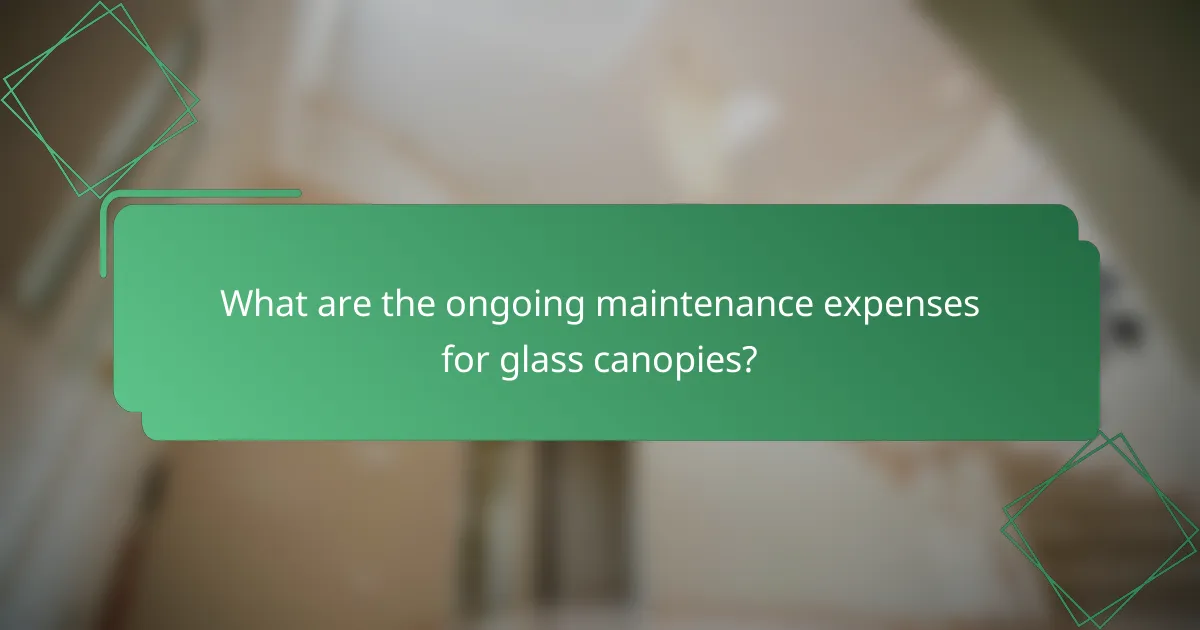
What are the ongoing maintenance expenses for glass canopies?
The ongoing maintenance expenses for glass canopies typically involve regular cleaning, inspections, and occasional repairs. These costs can vary based on the canopy’s size, location, and environmental factors.
Annual maintenance cost estimates
Annual maintenance costs for glass canopies generally range from a few hundred to a couple of thousand dollars. Factors influencing these costs include the canopy’s size, the complexity of the installation, and the frequency of required upkeep. In urban areas, where dirt and grime accumulate faster, costs may be on the higher end of this spectrum.
Common maintenance tasks
Key maintenance tasks for glass canopies include cleaning the glass surfaces to prevent buildup of dirt and debris, inspecting seals and frames for wear, and ensuring drainage systems are clear. Regular cleaning can often be done with mild detergents and soft cloths to avoid scratches.
Additionally, checking for cracks or chips in the glass is crucial, as these can lead to more significant issues if left unaddressed. Scheduling professional inspections annually can help catch problems early and maintain the canopy’s integrity.
Impact of climate on maintenance
Climate significantly affects the maintenance needs of glass canopies. In areas with heavy rainfall or snow, regular inspections are essential to ensure that water drainage systems are functioning properly. Accumulation of snow or ice can lead to structural stress, necessitating prompt attention.
Conversely, in hotter climates, UV exposure can degrade seals and frames, leading to increased maintenance costs over time. Adapting maintenance schedules to local weather patterns can help mitigate these impacts and prolong the lifespan of the canopy.

What factors should be considered when choosing a glass canopy?
When selecting a glass canopy, consider design, durability, safety standards, and maintenance needs. These factors will influence not only the aesthetic appeal but also the long-term functionality and safety of the structure.
Design and aesthetic considerations
The design of a glass canopy should complement the existing architecture while serving its functional purpose. Consider the shape, size, and style of the canopy to ensure it enhances the overall look of the building.
Materials also play a crucial role in aesthetics. Options like tempered or laminated glass can provide different visual effects and levels of transparency. Choose finishes and framing that align with the desired appearance, whether modern or traditional.
Durability and safety standards
Durability is essential for the longevity of a glass canopy. Ensure the glass meets local safety standards, such as those set by the American National Standards Institute (ANSI) or the International Building Code (IBC). Tempered glass is often recommended for its strength and resistance to breakage.
Additionally, consider the environmental factors in your area, such as wind load and snow accumulation, which can impact the canopy’s performance. Regular inspections and maintenance are necessary to uphold safety and durability over time.
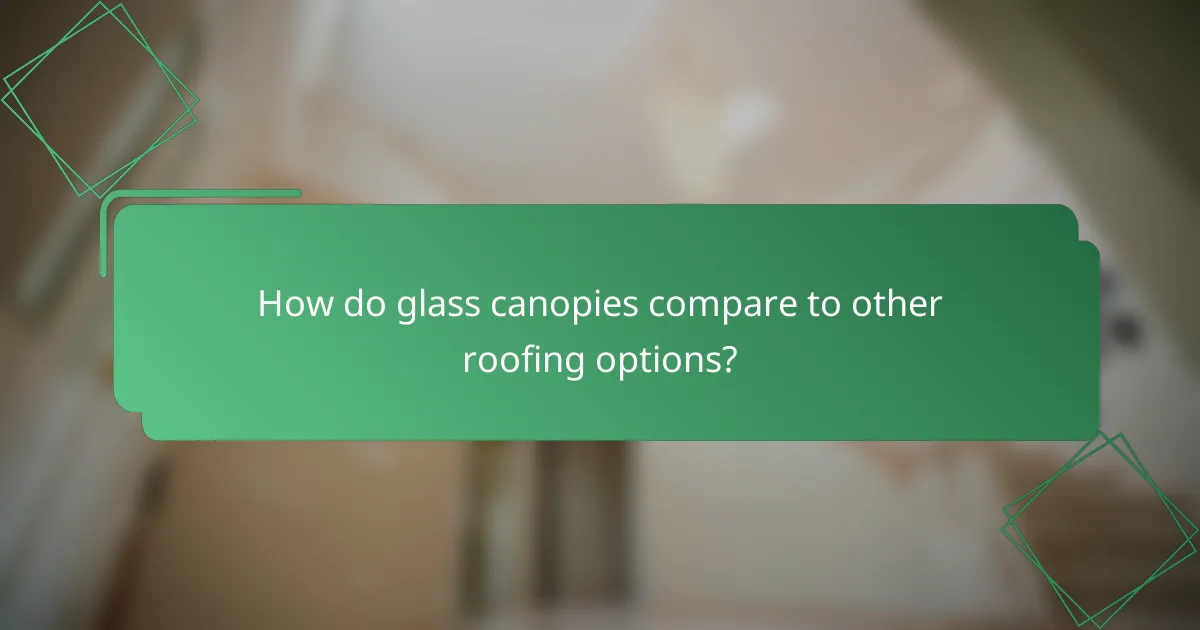
How do glass canopies compare to other roofing options?
Glass canopies offer a modern aesthetic and durability compared to traditional roofing materials. They provide excellent light transmission and can enhance the visual appeal of a structure, but their costs and installation logistics can differ significantly from alternatives like polycarbonate or metal roofing.
Cost comparison with polycarbonate canopies
Glass canopies typically have higher material costs than polycarbonate options. While polycarbonate canopies may range from $15 to $30 per square foot, glass canopies often start around $30 and can exceed $100 per square foot depending on the type of glass and design complexity.
Installation costs for glass canopies can also be higher due to the need for specialized labor and equipment. Overall, while the initial investment for glass is greater, its longevity and aesthetic appeal may justify the expense for some homeowners or businesses.
Advantages over traditional roofing
Glass canopies provide superior light transmission compared to traditional roofing materials, which can help reduce energy costs by minimizing the need for artificial lighting. They are also resistant to fading and weathering, ensuring a longer lifespan with minimal maintenance.
Additionally, glass canopies can enhance the overall design of a property, offering a sleek and contemporary look that can increase property value. Their ability to create an open, airy space makes them a popular choice for patios, walkways, and commercial buildings.
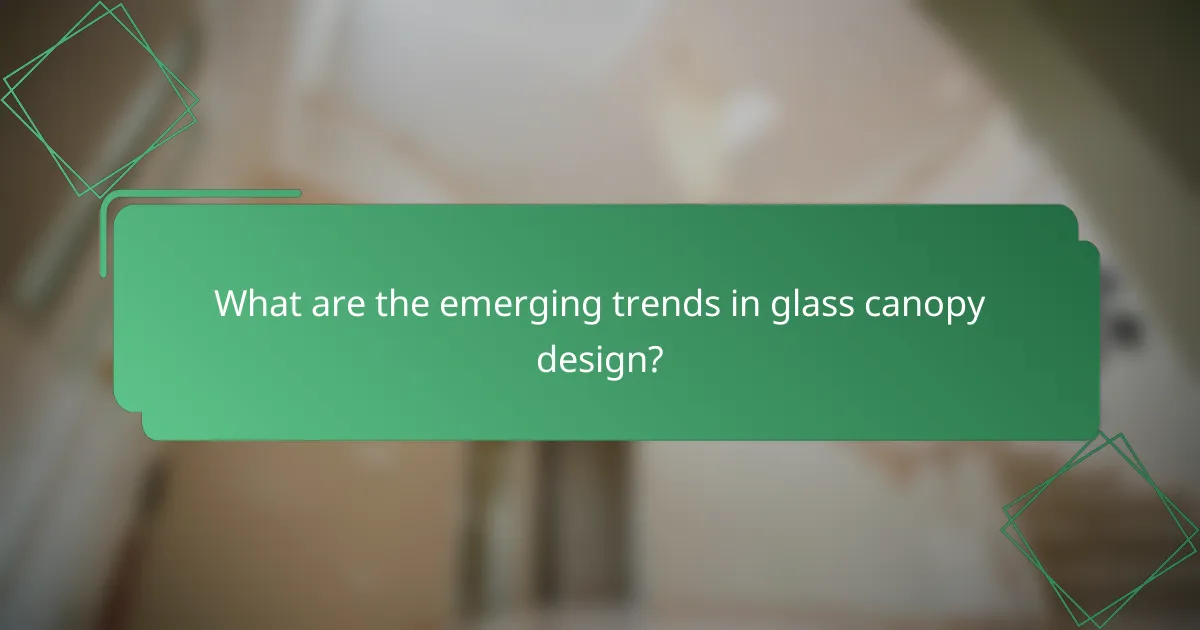
What are the emerging trends in glass canopy design?
Emerging trends in glass canopy design focus on innovative materials, sustainability, and advanced technologies. These trends aim to enhance aesthetics, functionality, and environmental responsibility in construction.
Innovative materials and technologies
Recent advancements in glass canopy design include the use of laminated and tempered glass, which offer improved strength and safety. Smart glass technology, which can adjust transparency based on sunlight, is gaining traction for energy efficiency.
Additionally, lightweight framing materials such as aluminum and fiberglass are being utilized to reduce structural load while maintaining durability. These innovations allow for more creative and versatile designs in urban environments.
Sustainable practices in canopy construction
Sustainability is a key focus in modern glass canopy construction, with many projects incorporating recycled materials and energy-efficient designs. Using solar panels integrated into the canopy can provide renewable energy while reducing the building’s carbon footprint.
Moreover, adherence to local environmental regulations and LEED certification standards is becoming increasingly common, ensuring that new constructions meet sustainability benchmarks. This not only benefits the environment but can also lead to cost savings over time.
Future market predictions in Canada
The Canadian market for glass canopies is expected to grow steadily, driven by urban development and a rising demand for aesthetically pleasing structures. Increased investment in green building initiatives will likely boost the adoption of innovative glass solutions.
As cities like Toronto and Vancouver continue to expand, the integration of glass canopies in public spaces and commercial buildings will become more prevalent. This trend may lead to a greater emphasis on design flexibility and environmental impact in future projects.
